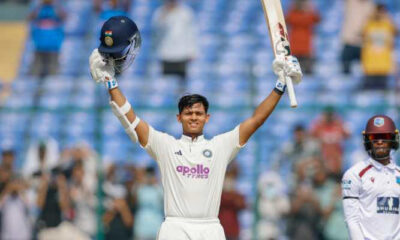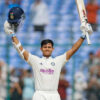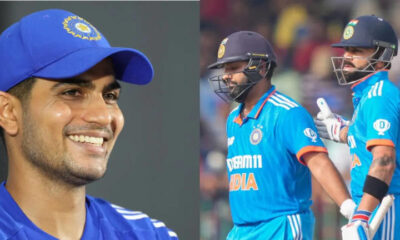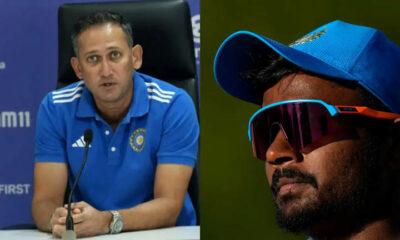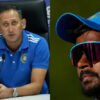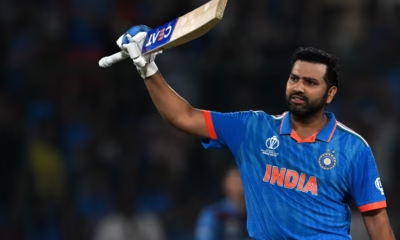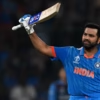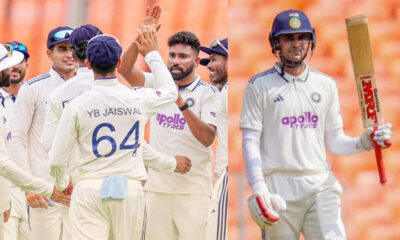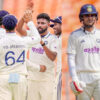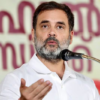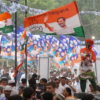The Neeraj Chopra Classic: A Gold Medal Evening in Bengaluru That Redefined Indian Athletics
On a warm Saturday evening in Bengaluru, Indian sport witnessed a seismic shift. Not just in meters measured or medals claimed, but in meaning, momentum, and movement. It was India’s first elite international javelin meet—the Neeraj Chopra Classic—but it felt more like a festival. The Sree Kanteerava Stadium, pulsing with chants, cheers, and camera flashes, turned into a cauldron of inspiration. And at the heart of it all stood Neeraj Chopra: Olympic champion, host, organiser, athlete, and a symbol of what Indian sports could be.
With a winning throw of 86.18 meters, Neeraj did what he always does—win. But on this night, the victory felt like a subplot. What truly stood tall was the atmosphere, the emotion, and the enormous leap this event marked for Indian track and field.
A Carnival of Javelin, in India
What was promised as an elite meet turned into a sporting carnival. The crowd? An unprecedented 14,593. For javelin. In India. A number that in itself felt like a record. Children in school uniforms, grandparents with binoculars, college students waving flags—fans filled the stands not just for Neeraj, but for the sport.
Even international athletes, seasoned in global events, were blown away.
“Fifteen thousand people for only javelin is unique. To be honest, I have never seen something like this,” said Rio 2016 Olympic champion Thomas Röhler.
Kenya’s Julius Yego, who bagged silver, beamed, “Before I even threw my best, I was joining the fun with the crowd. I came up with a season-best throw. I am going home happy.”
This wasn’t just an event. It was a blueprint for what Indian athletics could become—with vision, intent, and a star like Neeraj to lead the way.
Neeraj: The Multitasking Mastermind
Neeraj Chopra has long been the face of Indian athletics. But on this night, he became its spine, soul, and stage manager.
The event wasn’t simply named after him—it was shaped by him. Inspired by global meets he’s competed in since Tokyo 2020, Neeraj dreamt of bringing the same grandeur, organisation, and emotion to Indian soil. And he did.
Even before the javelins took flight, Neeraj had been quietly planning the event for months. He met with sponsors, partnered with Karnataka’s government, juggled media duties, and trained. He wasn’t the center of attention by choice—he was the engine of execution.
On match day, he was on the field early, jogging, scanning, checking arrangements, even talking to volunteers. Minutes before warm-up, he noticed a glitch in the mini-car that ferried javelins back after each throw.
“Only small things concerned me,” he later said. “For instance, the car bringing the javelins back was a little slow. As athletes, we want them returned quickly to stay in rhythm. I even thought—maybe we should just run and get them ourselves!”
That’s Neeraj. Detail-obsessed, never satisfied, and always thinking beyond himself.
The Throw, and the Roar
When Neeraj’s name was called, the roar was deafening. After a minor slip following his first throw, he settled quickly and never looked back. His best effort—86.18 meters—was enough to seal gold in a competitive field featuring Olympic medallists and young challengers from across Asia and Africa.
But it wasn’t just the winning throw that defined the evening. It was the way Neeraj soaked it in, gave it back, and included everyone—from athletes to fans—in the celebration.
At one point, after securing the win, he grabbed a mic at the post-event press conference and turned interviewer, asking silver medallist Julius Yego for feedback.
“Was everything okay for you? You’re one of the most senior athletes, you’ve travelled the world. Could you share a piece of advice?” he asked with sincere humility.
Yego laughed, clearly charmed. “What should I say? Everything was nice.”
It was more than nice. It was a masterclass in sportsmanship, leadership, and heart.
More Than a Meet—A Movement
The Neeraj Chopra Classic wasn’t just about performance—it was about purpose. In the stands were hundreds of young athletes, many of whom had never before witnessed such an event live. Among them were Raanjan Vijayan, an 80m hurdler, and Sanath Shetigar, a middle-distance runner—both under-16 athletes from Karnataka. They sat wide-eyed, clapping at every throw, visualising their own futures.
And that may be the greatest throw Neeraj landed all night: the passing of the torch. Inspiration isn’t always loud. Sometimes it sits quietly in the stands, in the minds of teenagers who just realised that a stadium full of people once screamed for a javelin throw.
This was the meet’s true legacy. It made athletics aspirational. It gave javelin glamour. It showed that India is ready to fall in love with more than just cricket—if only it’s given something real to believe in.
Star Power, Shared Spotlight
While Neeraj remained the undisputed star, the event’s success lay in how inclusive it felt. Every athlete was celebrated. Sri Lanka’s Rumesh Tharanga, just 22, danced after every attempt and finished with bronze—his grin as wide as his throw. Jan Železný, the world record holder and Neeraj’s coach, received an ovation that shook the stadium as he stepped out during warm-ups.
This wasn’t just a meet. It was a memory machine.
From the perfectly timed light shows to the crowd-participation segments and music synced with throws, the event blended entertainment with elite sport. It was the IPL-ification of athletics—but with authenticity.
The Weight of Hosting
Post-event, Neeraj admitted the pressure he felt.
“There was pressure, a different kind of pressure,” he said. “I wasn’t just thinking like an athlete. I was worrying about how things were being organised. Even the smallest delay had me fretting.”
But nothing faltered. The event ran like clockwork. The atmosphere never dipped. The athletes felt seen, the crowd felt involved, and Indian sport felt transformed.
Neeraj didn’t just win gold. He won trust.
The Road Ahead
What began as a bold experiment may now evolve into an annual celebration. There are calls already to institutionalise the Neeraj Chopra Classic, perhaps as part of the global athletics calendar. The Athletics Federation of India, impressed by the turnout and execution, is reportedly exploring partnerships to expand the meet’s scale and format.
Neeraj, too, has hinted that this is just the beginning.
“To see athletics getting this much support is what we wanted,” he said. “It felt so good. This is a reward for the athletes’ hard work.”
And what a reward it was. The stadium didn’t just watch Neeraj perform. It became a part of his dream—one that took years to build, but just one night to make real.
Final Thoughts
The Neeraj Chopra Classic has changed the narrative. It showed that Indian sport, when done right—with vision, sincerity, and spectacle—can unite people, inspire generations, and make new heroes.
It wasn’t just about gold. It was about grit, giving back, and growing something beautiful. And fittingly, it ended not with a closing ceremony, but with a promise: that Indian athletics now has its own festival of excellence. That javelin has a home.
That when Neeraj throws, a nation stands up—not just to applaud, but to believe.
IT.













